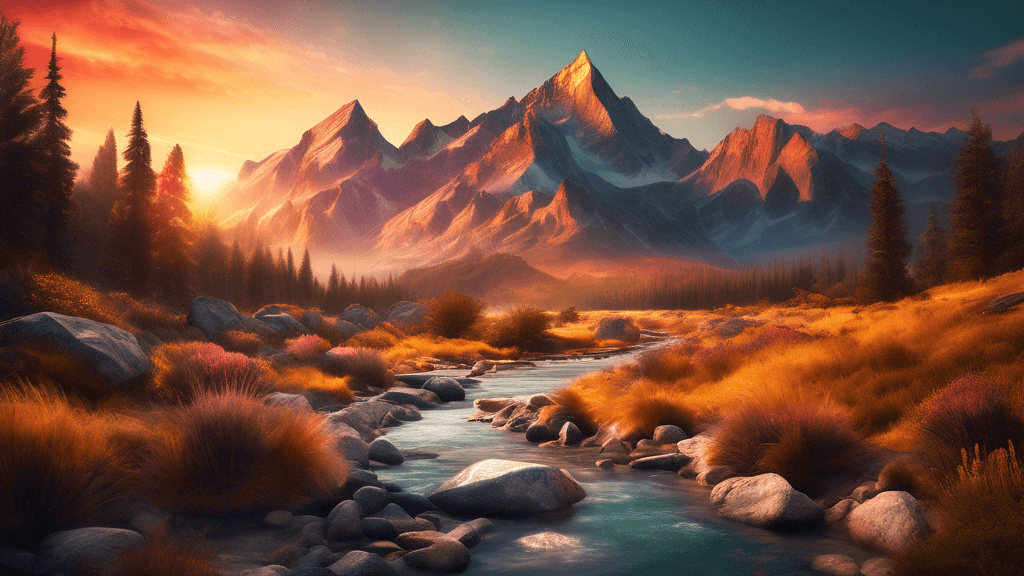
Mastering Composition: Essential Techniques for Stunning Landscape Photography
Share
Understanding the Fundamentals of Landscape Photography Composition
When it comes to capturing the breathtaking beauty of nature through landscape photography, mastering the art of composition is crucial. But what exactly does composition entail, and why is it so important in landscape photography? Composition refers to the arrangement of elements within a photograph, a crucial factor that can turn a simple snapshot into a compelling piece of art. The composition not only guides the viewer's eye but also conveys the emotions and messages of the photographer.
Why Should You Care About Composition?
Every landscape photograph tells a story. The way hills curve, how trees frame a mountain, or where the horizon sits in your frame—each of these elements plays a part in narrating that story. A well-composed photograph can evoke emotions and provoke thought, providing a deep connection between the viewer and the scene.
Key Composition Techniques in Landscape Photography
The Rule of Thirds
Perhaps the most famous composition technique is the Rule of Thirds. Imagine dividing your image using two horizontal and two vertical lines, creating nine equal parts. Placing the important elements of your scene along these lines or at their intersections can help achieve balance and draw the viewer's eye into the composition.
Leading Lines
Leading lines are another powerful compositional tool in landscape photography. Paths, rivers, fences, or even shadows can serve as leading lines, drawing the viewer's eye through the photograph and towards the main subject or focal point. Proper use of leading lines can create a sense of depth and perspective.
Balance and Symmetry
Including elements that balance each other out can greatly enhance the impact of your landscape photos. For instance, a large tree on one side might be balanced by a dense bush on the other. Symmetry, particularly reflected in calm waters or perfect tree lines, can also be visually striking, adding a sense of harmony and tranquility to your images.
Use of Natural Frames/curriaclesculpting>
Incorporating natural frames into your landscape photography can add depth and focus the viewer’s attention on the primary subject. Overhanging branches, windows, arches, or holes in rocks are perfect examples of natural framing that can enhance the aesthetic appeal of your composition.
Advanced Composition Techniques
Utilizing more advanced techniques can distinguish your work from the crowd. Techniques such as the golden ratio, focus stacking for greater depth of field, and experimenting with exposure times for dynamic landscapes. Continuing to learn and apply these advanced techniques can elevate your landscape photography from good to great.
In a survey of professional photographers, composition was rated as one of the top factors that elevate a landscape photograph from ordinary to extraordinary. Understanding and mastering this art form can truly set your work apart.
Real Specialist Insight
The beauty of landscape photography lies in its ability to transport us to another place, and mastering composition allows us to guide the viewer's journey through the scene, says Julianne Kost, renowned photographer and educator.
While rules and techniques are fundamental, the real magic happens when you start to bend or even break these rules to fit the mood or scenario of the landscape before you. What if you placed your horizon line much higher, or used an unconventional leading line? Such decisions can add a unique signature to your work, making it distinctly yours.
Remember, the key to exceptional landscape strikes the perfectachievable is understanding and effectively applying the principles of composition. Capture more than just a scene; capture a feeling, a moment captured in time. With practice and attention to detail, your landscape photographs can transform into captivating works of abyarnistsense.
Grab your camera, step outside, and start exploring with these composition techniques in mind. The landscape is an ever-changing canvas that waits for no one. What stories will you tell through your lens?
The beauty of landscape photography lies in its ability to transport us to another place, and mastering composition allows us to guide the viewer's journey through the scene, says Julianne Kost, renowned photographer and educator.While rules and techniques are fundamental, the real magic happens when you start to bend or even break these rules to fit the mood or scenario of the landscape before you. What if you placed your horizon line much higher, or used an unconventional leading line? Such decisions can add a unique signature to your work, making it distinctly yours. Remember, the key to exceptional landscape strikes the perfectachievable is understanding and effectively applying the principles of composition. Capture more than just a scene; capture a feeling, a moment captured in time. With practice and attention to detail, your landscape photographs can transform into captivating works of abyarnistsense. Grab your camera, step outside, and start exploring with these composition techniques in mind. The landscape is an ever-changing canvas that waits for no one. What stories will you tell through your lens?





